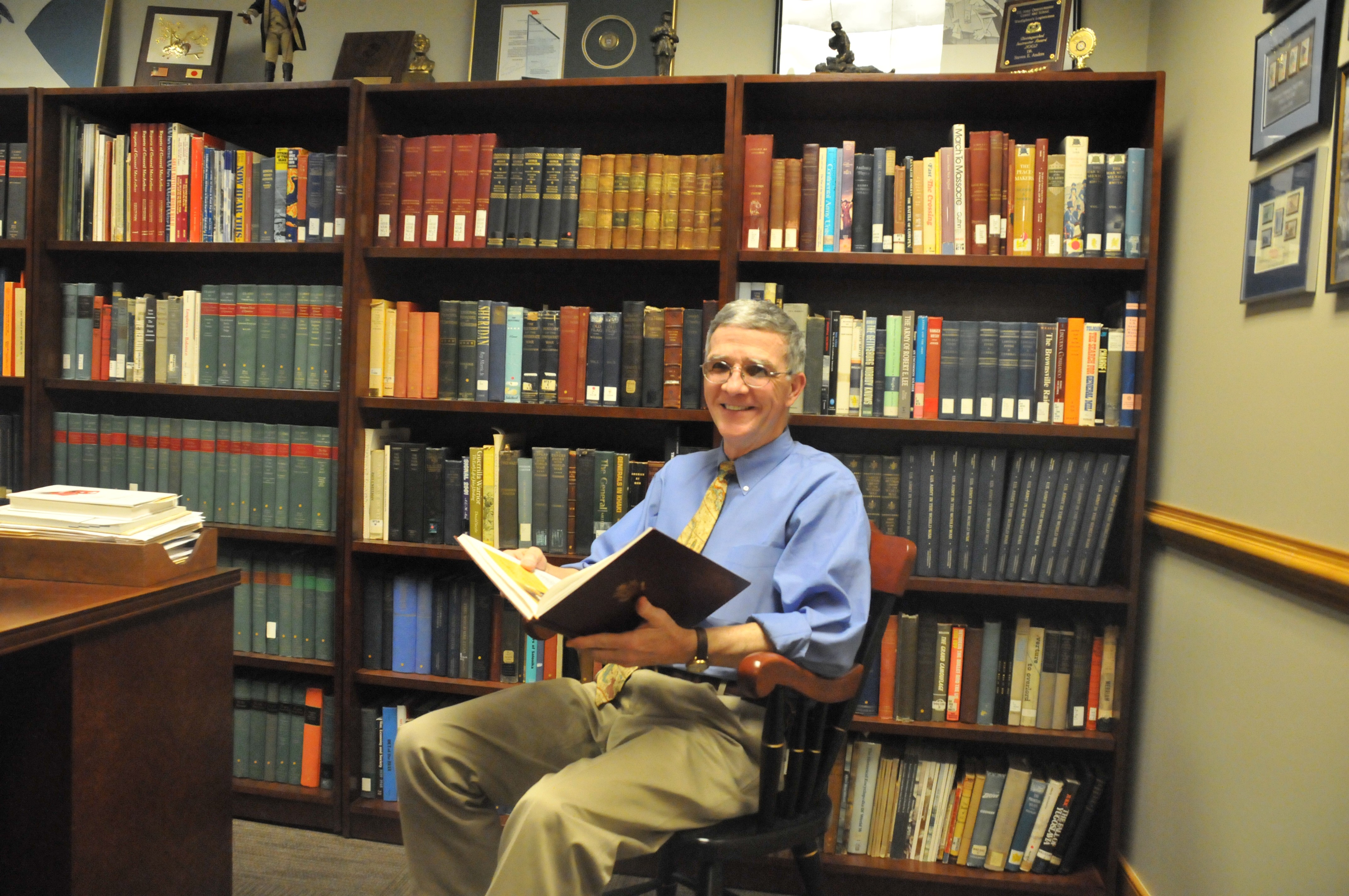FORT LEE, Va. (Feb. 19, 2010) -- For more than two decades, Dr. Steve Anders has been the keeper of the Quartermaster's history; now he's turned his own page in the chronicles of time.
Anders recently became the Combined Arms Support Command historian. He will continue his work as the guardian of past and present facts. As the new CASCOM historian, however, he will be the first to benefit from the co-location of the QM general, chief of Ordnance and chief of Transportation and their historians at the Sustainment Center of Excellence.
"I can now look forward to unprecedented close coordination with the Soldier Support Institute History Office at Fort Jackson, as well as the three Branch History Offices here at Fort Lee - all under the SCoE banner," he said.
In addition to his historian duties, Anders has been granted the title of professor of military history and logistics at the Army Logistics University, and he is teaching courses supporting leader development.
"I teach the history of sustainment and how it has evolved over the centuries," Anders said. "It is as critical today as ever before to have good leader development. I recently taught the evolution of sustainment all over the world from Hanibal to Hitler, from Caesar to Schwarzkopf."
Before Anders was the guy with all the answers about quartermaster history, he was a young veteran who had just returned from a tour of duty in Vietnam. He didn't know where his path would lead him next, so when a former professor suggested Anders attend graduate school, he did, utilizing his GI Bill. As he finished his extensive education, Anders was working at his alma mater in the early 1980s as a documents librarian and teaching history at the Indiana University East in nearby Richmond, Ind., when he saw an advertisement for multiple historian positions for the Army in the Training and Doctrine Command history program.
"I was teaching military history and happened to be reading the Chronicles of Higher Education. In the classifieds, there was a listing about the TRADOC history program," Anders said.
It was a time when jobs were scarce for historians, so he applied for all 16 positions, not knowing what the acronym represented but sensing it was an opportunity of a lifetime. In 1984, he was pleased to learn he'd been selected as the quartermaster historian. He was thrilled when he finally looked on the map and saw where he'd be working.
"For a historian, 25 miles from Richmond, an hour from Williamsburg, Yorktown, Chancellorsville, five hours from Gettysburg, it would have been my pick." Anders said. "I couldn't have asked for a better assignment."
For Anders, the move to Virginia and joining the CHP meant beginning a long career in a field he is passionate about.
Anders said he's looking forward to fostering improvements in the history curriculum and helping to raise the visibility of history - its value and its purpose - in the overall leader development program at the ALU with the branch historians.
While he's spent years at Fort Lee, Anders has witnessed or been part of a great deal of the installation's continuous changes over the years, but nothing compared to the metamorphosis brought by the 2005 Base Realignment and Closure law. As a historian, he sees a lot of change, especially in the landscape, but there are two sides to the coin of transformation: the moving forward and the looking back.
"For 20 years, the changes came in one building or one training facility at a time," he said. "A single ribbon cutting or a building dedication ceremony might be months in the works and take place a couple of times a year. But now it seems every few weeks there's another major ribbon-cutting ceremony. Where forests and bivouac sites existed two years ago now there are several brand new barracks, headquarters, dining and training facilities. The same occurred with the building of ALU and places all across the heart of Fort Lee. Mostly I find that it's the scope and the scale of change, and the speed with which it has occurred that takes my breath away. From my teacher's and instructor's perspective, I can say that it's a pleasure to work in these modern facilities with all the support and amenities they provide.
But looking back, which Anders says historians are paid to do, most of the original buildings on the installation that represented the birth of Fort Lee are gone.
"I confess that I get a tiny bit wistful at times in the face of all this change," he said.
"For years, there were places I could go on post where it really felt like a bygone era."
While many of the old buildings failed the test of time, others have stayed and represent the days of Camp Lee and earlier.
"They have served us well, but for me, the destruction of those old white framed structures is like another veteran passing from the scene," Anders said. "But that's how it's always been ... the old making way for the new."
With so much change to document and more history to be made at Fort Lee, Anders and the other members of the Command History Program will be ensuring that future generations of sustainment Soldiers are well versed in the early years of "the Home of Sustainment."


Social Sharing